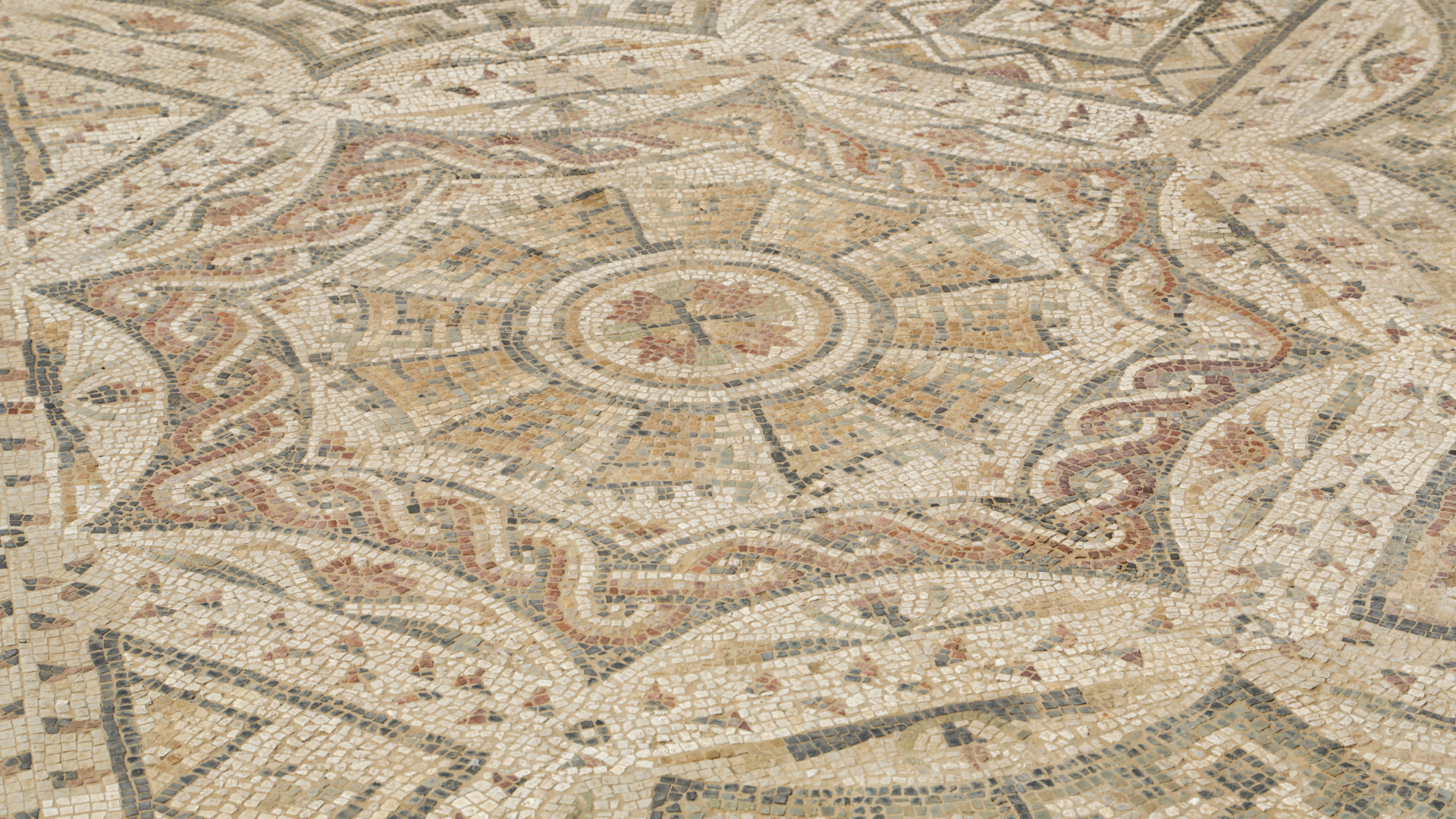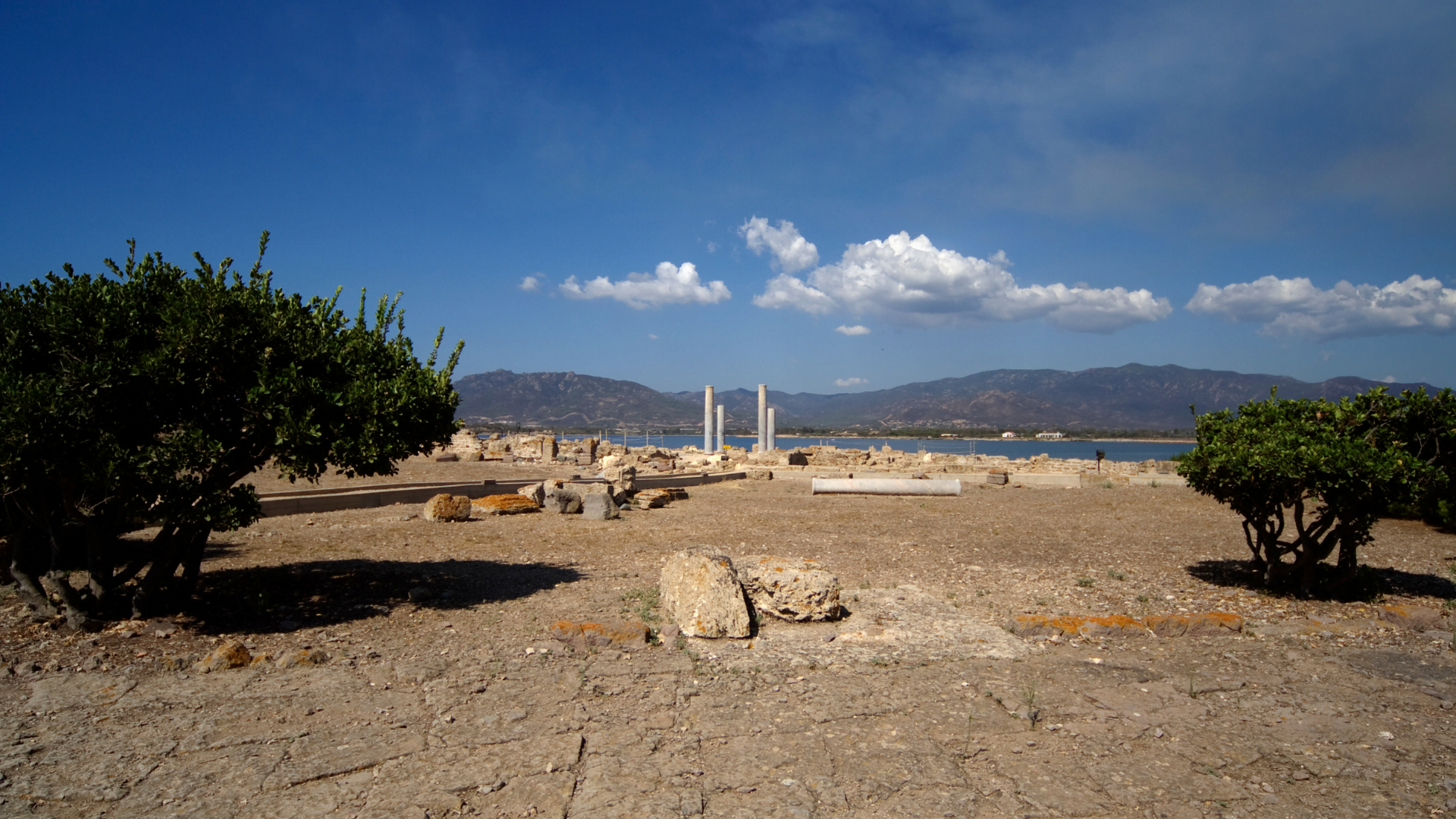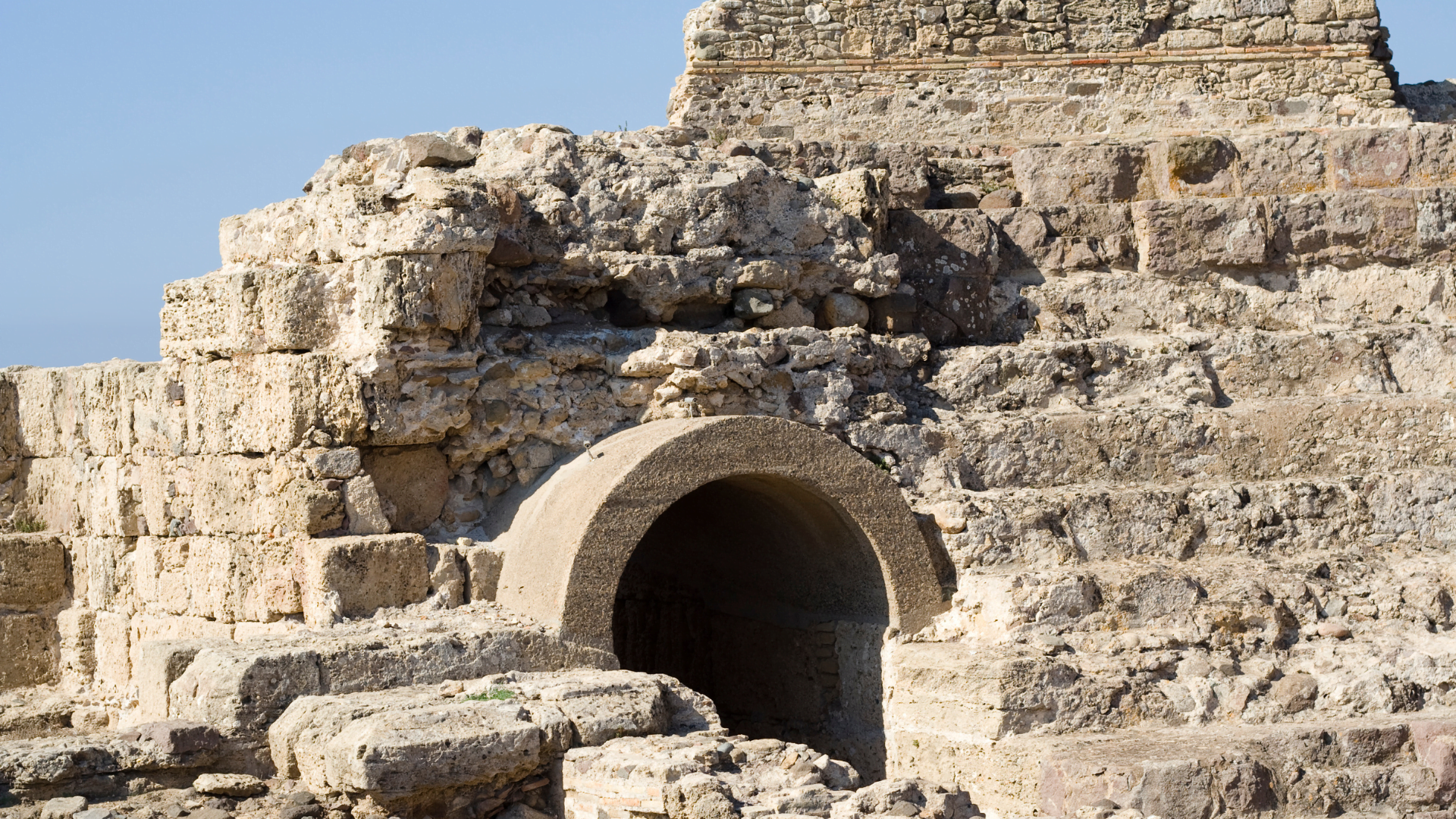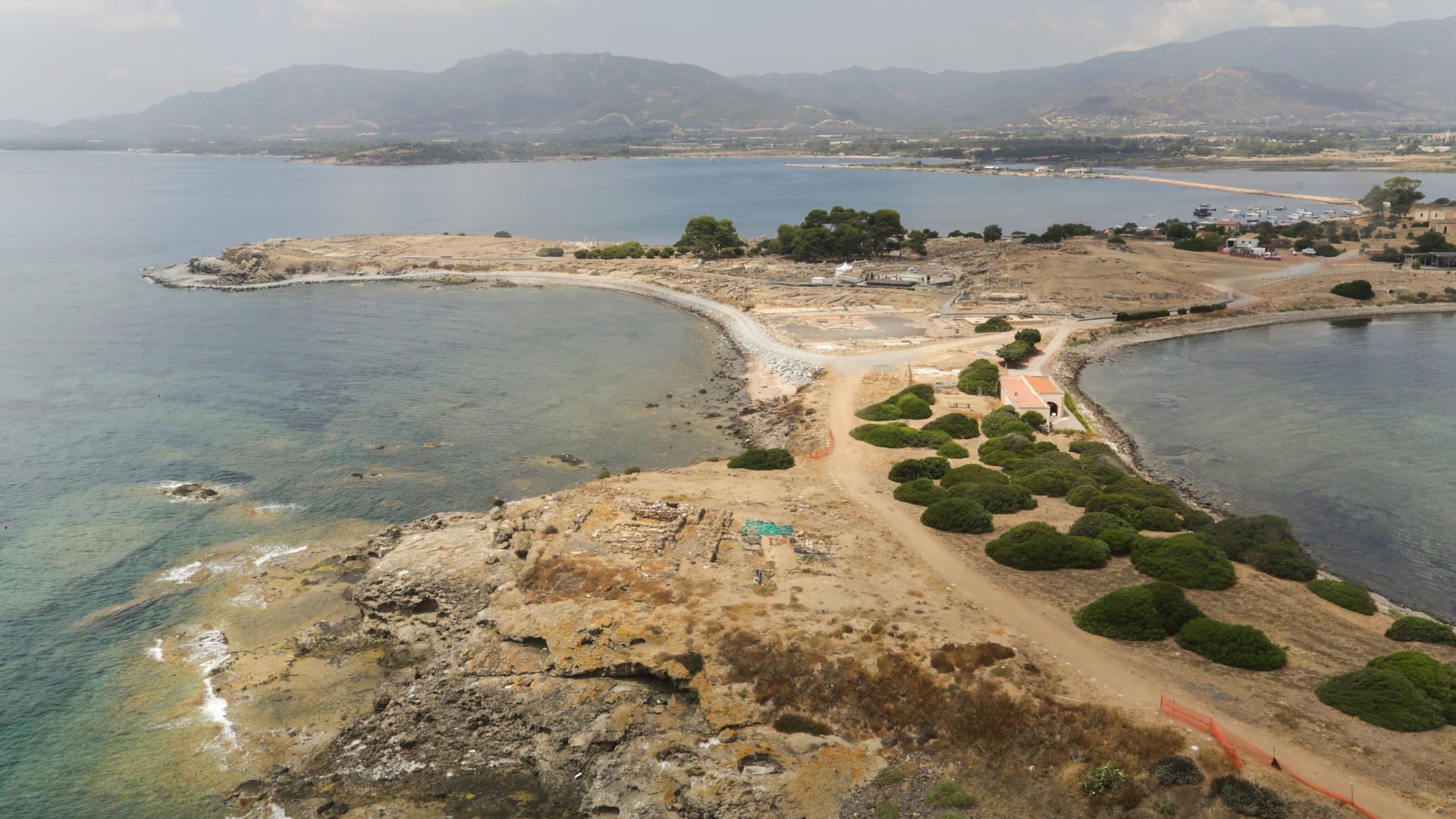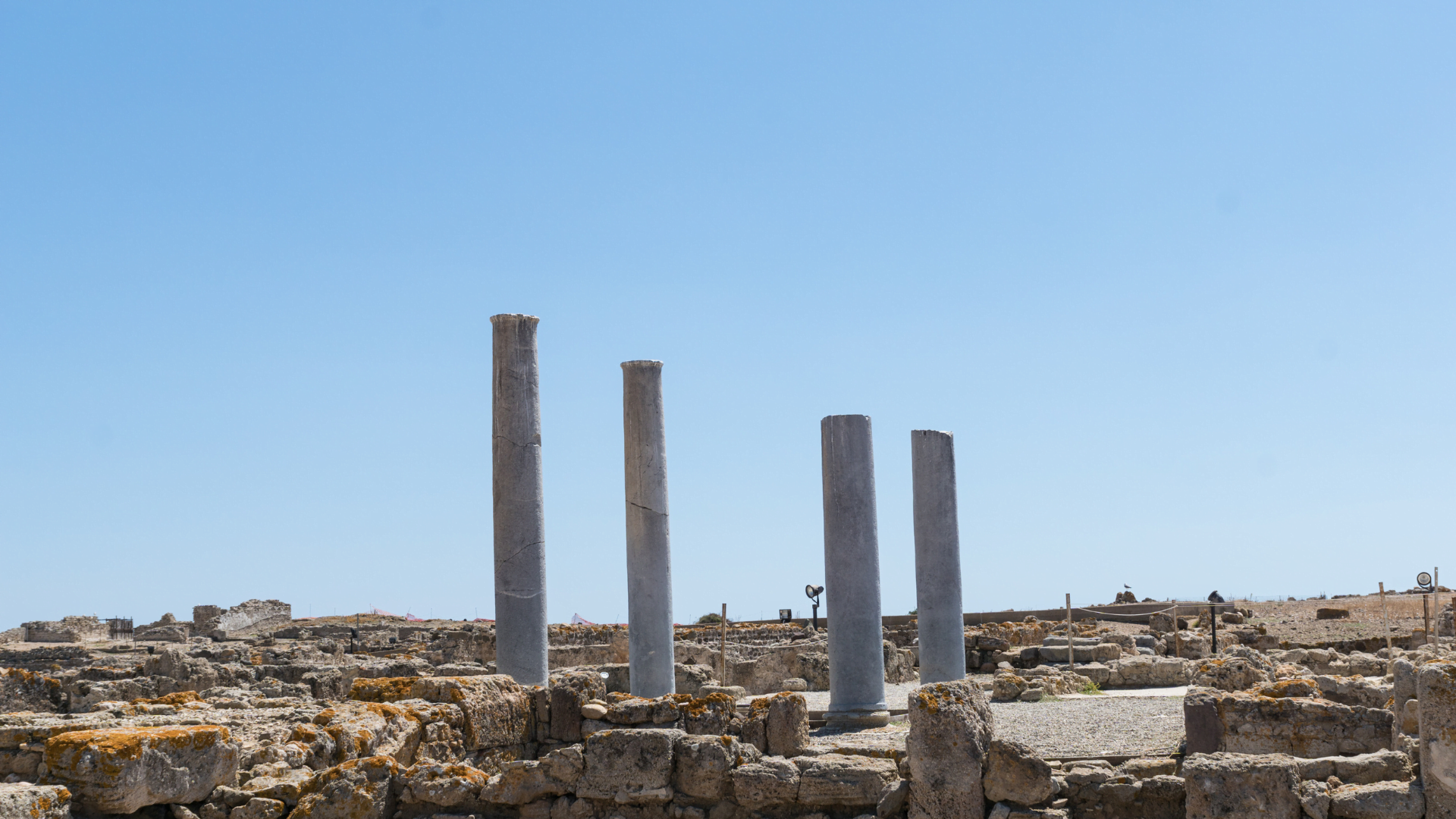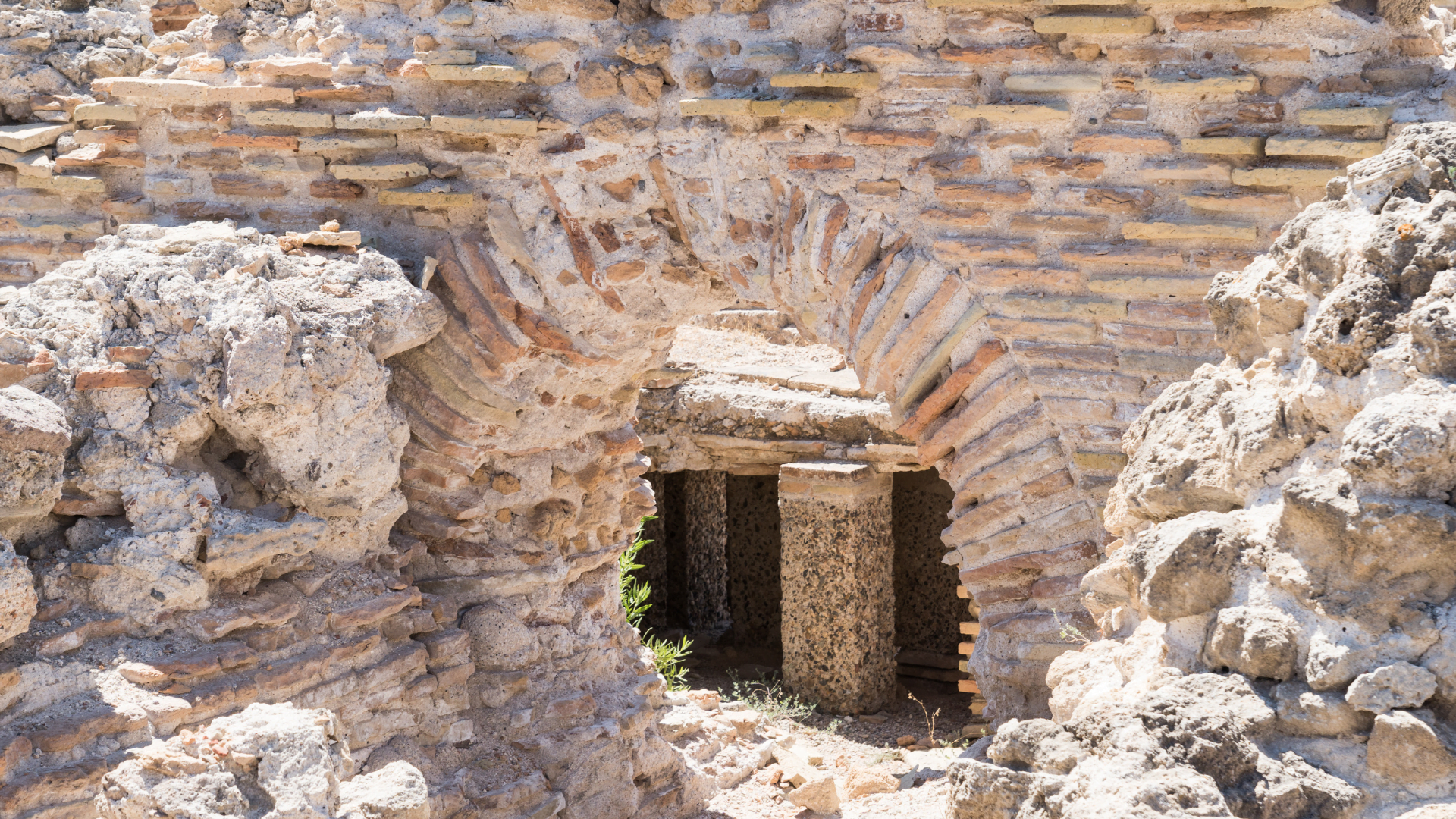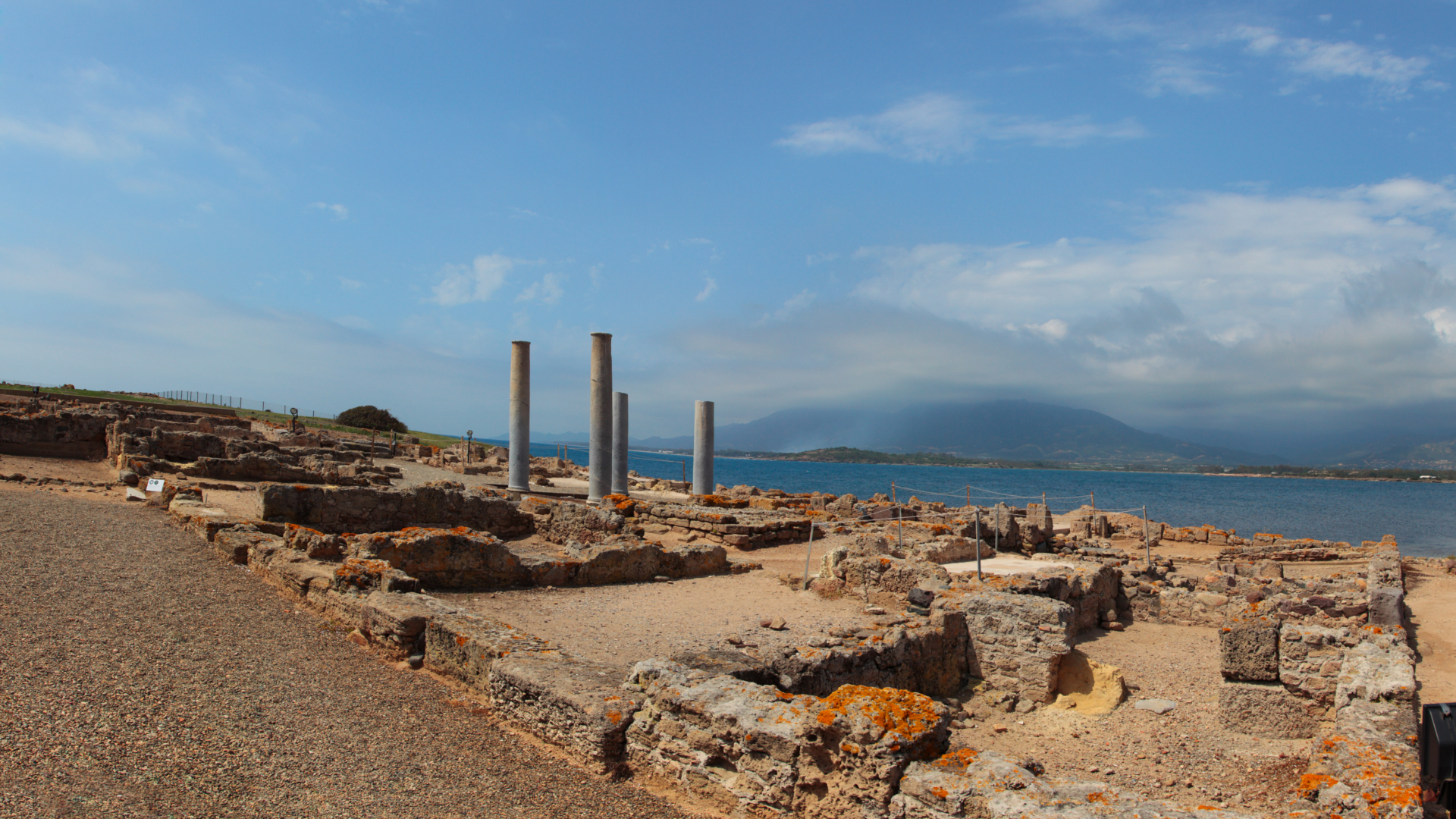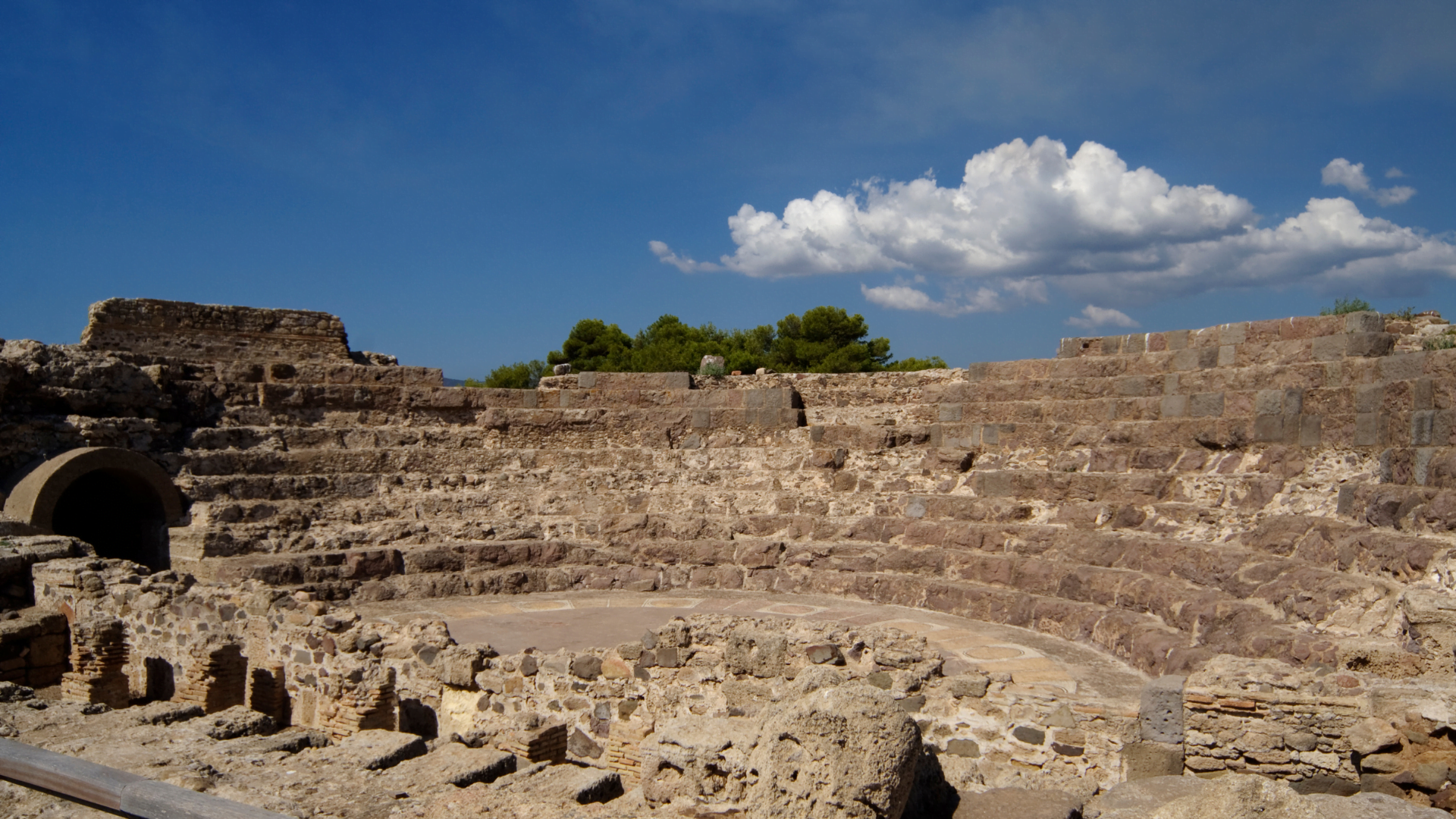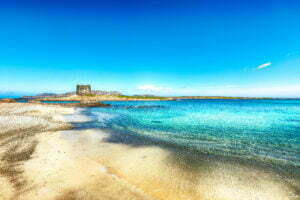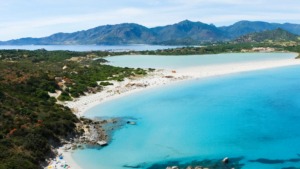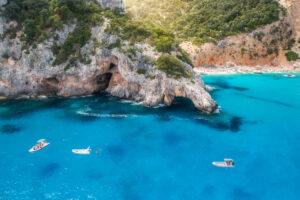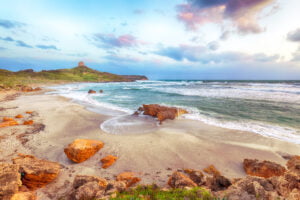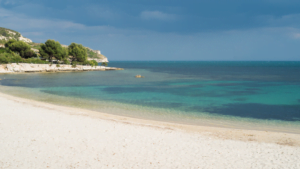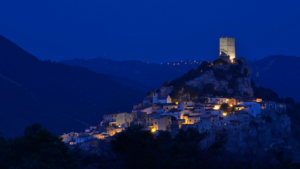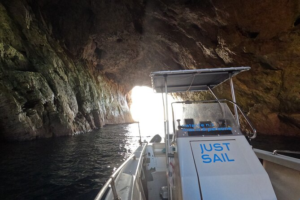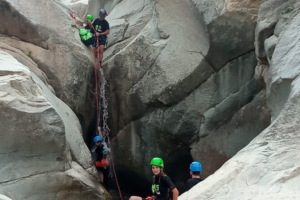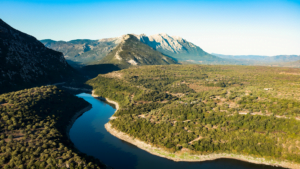Nora is one of the most important archaeological sites in Sardinia, renowned for its well-preserved ruins and rich history. Founded by the Phoenicians in the 8th century BC, Nora evolved into a significant Punic settlement before becoming a prominent Roman city. The site, located on the Capo Pula peninsula, offers a fascinating glimpse into the diverse cultures that have influenced Sardinia over millennia.
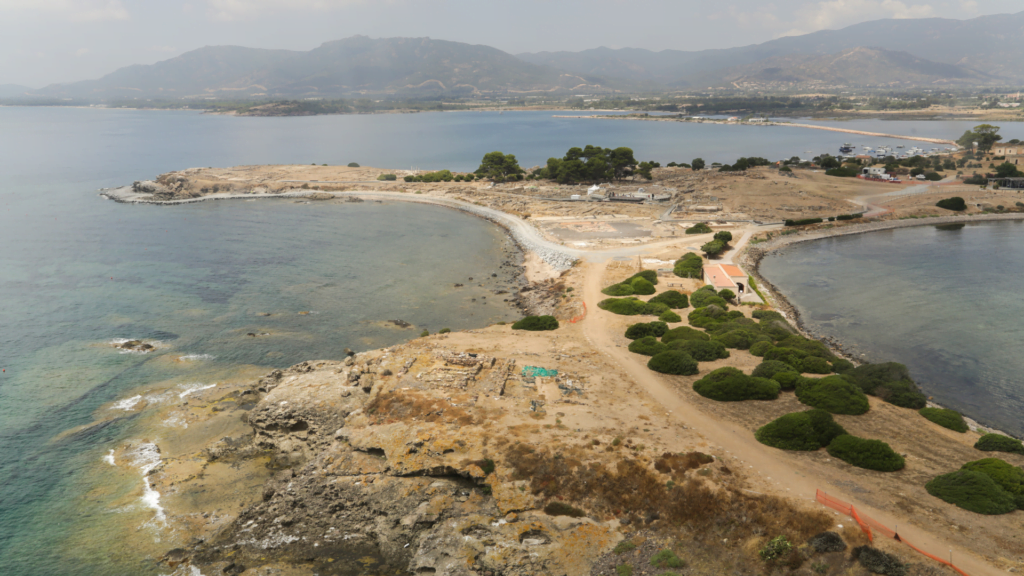

Brief History and Significance
Nora’s history is a testament to its strategic importance in the Mediterranean. Initially settled by the Nuragic people, it was later developed by the Phoenicians into a thriving trade center. The Punic period saw further growth and urbanization, with the city reaching its zenith under Roman rule. During the Roman era, Nora became a municipium, featuring advanced infrastructure, including baths, a theater, and temples. The city’s blend of cultural influences and architectural styles makes it a valuable site for understanding the ancient Mediterranean world.
Nora is situated on the Capo Pula peninsula in southwestern Sardinia, about 40 kilometers from Cagliari, the island’s capital. This scenic location, with its proximity to both the sea and the town of Pula, adds to the site’s allure.
Nora’s picturesque setting and historical depth make it a must-visit destination for those interested in Sardinia’s ancient past.
Nora Photos
Tour Options
Guided Tours and Their Benefits
Guided tours are an excellent way to experience the archaeological site of Nora. They provide in-depth historical context and insights that you might miss on your own.
Guided tours often include transport from Cagliari, making them a convenient option for a day trip. Tours are available in multiple languages, including Italian, English, French, and German. A guided tour ensures you gain a comprehensive understanding of the site’s significance and history.
Guided Tour to the Archaeological Site of Nora from Cagliari


This tour offers a comprehensive and convenient way to explore the ancient ruins, accompanied by detailed historical narratives.
Experience Highlights:
- Stress-Free Travel: Avoid the hassle of public transport with a guided day trip that includes round-trip transfers from Cagliari.
- Skip the Line: Save time with prebooked admission tickets, ensuring you maximize your time exploring the site.
- Expert Guidance: Discover the fascinating history of Nora with a knowledgeable guide, who will take you through key sites such as the Roman theater and the thermal baths.
- Small Group: Enjoy a more personalized experience with a small group, capped at just four people, allowing for a more intimate exploration.
What To Expect:
- Nora Archaeological Area: Spend about 1 hour and 15 minutes exploring the well-preserved ruins, beautiful mosaics, and scenic views by the sea. The tour provides deep insights into the Punic and Roman periods, enhancing your appreciation of the site.
To learn more about this tour, visit Tour to the archaeological site of Nora – from Cagliari.
Cagliari Private Shore Excursion: Nora Archaeological Site and Pula Town


The private shore excursion to Nora and Pula offers a tailored experience. This half-day tour ensures you see the best of Nora’s ruins and enjoy the charm of Pula at your own pace.
Experience Highlights:
- Private Tour: Enjoy the flexibility and personalized attention of a private guide, who will tailor the tour to your interests.
- Historical Insights: Gain a deeper understanding of Sardinia’s Phoenician and Roman heritage as you tour the ruins with your guide.
- Comfortable Transfers: Travel in comfort with round-trip private transfers from your cruise ship to the archaeological site and Pula.
- Scenic and Cultural Exploration: Capture stunning Mediterranean views and explore the local culture in the town of Pula, including shopping for unique souvenirs.
What To Expect:
- Nora Archaeological Area: Your guide will provide a 1.5-hour tour of the ancient ruins, showcasing key sites such as the thermal baths, the Temple of Tanit, and the Roman theater.
- Pula Town: Spend approximately 1.5 hours exploring Pula, a town known for its charming alleys and patrician homes, perfect for shopping and dining.
To learn more about this private shore excursion, visit Cagliari Private Shore Excursion: Nora Archaeological Site and Pula Town.
Self-Guided Tour Resources
For those who prefer to explore at their own pace, self-guided tours are a great option. The Norapp app is available for download on both Android and Apple devices. This app offers detailed information and audio guides for ten points of interest within the site, available in several languages, including Italian, English, French, German, Chinese, and Russian. The app includes photographs and comprehensive texts, making it a valuable resource for a self-guided tour.
Virtual Tour
Nora also has a virtual tour, complete with static, interactive images, virtual view (similar to maps streetview) and a fly around video.
Practical Tips
Opening Hours and Ticket Information
The archaeological site of Nora is open daily. During the summer, the site operates from 9:00 am to 8:00 pm, while in the off-season, it is open from 9:00 am until one hour before sunset. Ticket prices are €8 for adults and €4.50 for visitors aged 6-18 (it may change). Children under 6 can enter for free. It is advisable to book your visit in advance, either through the Mobilitapp app or by contacting the site directly.
Rules and Regulations for Visitors
To help preserve the site’s historical integrity, visitors are asked to follow certain rules:
- Do not walk on the mosaics.
- Avoid touching or leaning on ancient walls and structures.
- Refrain from entering the site in swimwear.
- Dogs are allowed, provided they are kept on a leash.
- Follow any additional guidelines provided by the site staff.
Historical Background
Early Settlements
Nuragic Origins
The earliest known settlers of Nora were the Nuragic people, who inhabited Sardinia from the Bronze Age through the early Iron Age. This ancient civilization is known for its distinctive stone structures called nuraghes, which are scattered across the island. While specific Nuragic remains in Nora are sparse, the presence of this culture laid the groundwork for future settlements due to their strategic use of the island’s resources and locations.
Phoenician Foundation in the 8th Century BC
Nora’s history took a significant turn in the 8th century BC when it was founded by the Phoenicians. As skilled sailors and traders from the region of present-day Lebanon, the Phoenicians established Nora as one of their westernmost outposts. This settlement quickly became a crucial hub for maritime trade, connecting Sardinia with other Phoenician colonies and the broader Mediterranean world. Artifacts from this period, including pottery and inscriptions, highlight the cultural and commercial exchanges that took place.
Punic Period
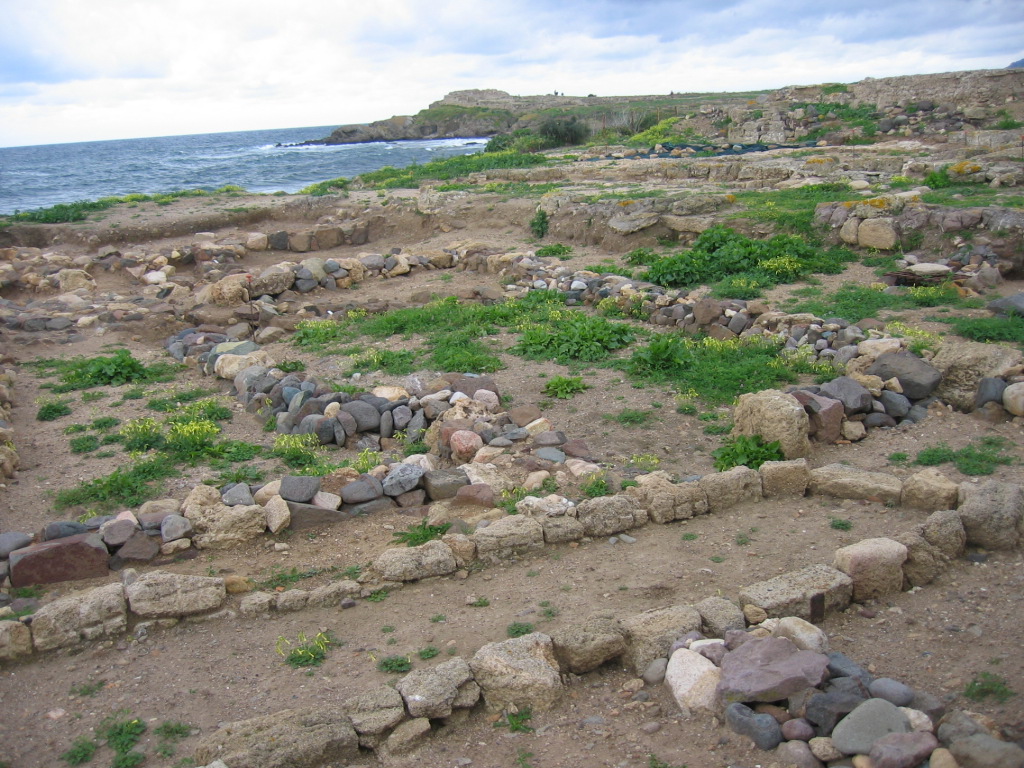

Development as a Trade Hub
Under Punic influence, Nora flourished into a major trade center. The Punic era, beginning around the 6th century BC, saw the expansion of the city’s infrastructure and population. The Carthaginians, who dominated much of the western Mediterranean, integrated Nora into their extensive trade networks. This period marked significant urban development, including the construction of temples, homes, and other public buildings.
Key Structures and Cultural Influences
One of the most notable Punic structures is the Temple of Tanit, dedicated to the Carthaginian goddess. Nearby, the tophet—a sacred burial ground—reveals insights into the religious practices of the time. The Punic influence is evident in the city’s architecture and urban planning, which combined local and Carthaginian styles. These cultural influences persisted even after the Roman conquest, blending with new elements introduced by the Romans.
Roman Era
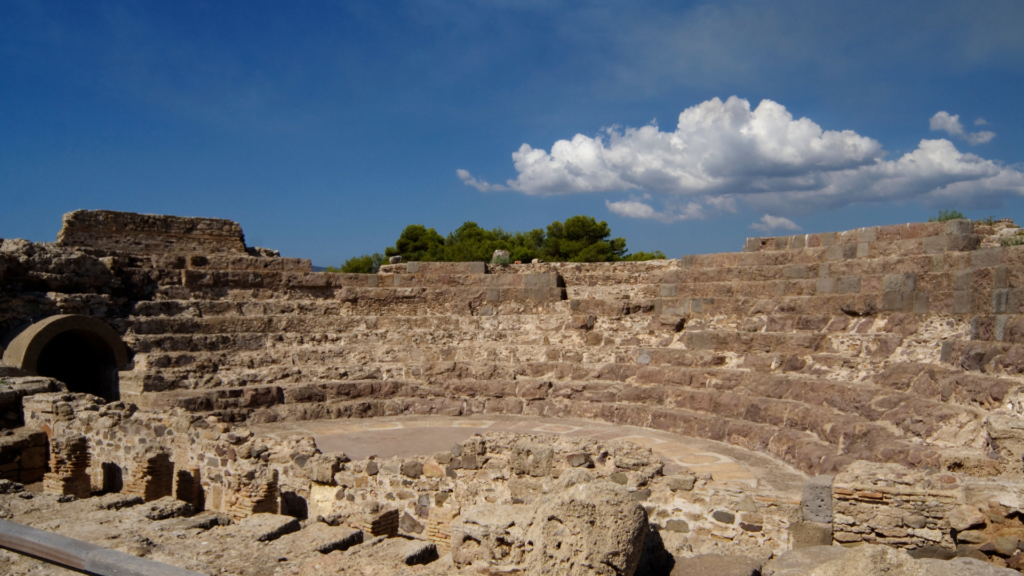

Conquest and Urban Expansion
In 238 BC, following the First Punic War, Nora was conquered by the Romans. This marked the beginning of a new era of prosperity and urbanization. The Romans recognized Nora’s strategic importance and invested in extensive construction projects to enhance the city’s infrastructure. Under Roman rule, Nora became a municipium, reflecting its status as an integral part of the Roman Empire.
Notable Roman Contributions and Transformations
The Roman era brought significant transformations to Nora. The construction of large public buildings, such as the Roman theater and various baths, highlights the city’s growth and sophistication. The Roman theater, the only one of its kind in Sardinia, remains a focal point for visitors today. The baths, including the Terme di Levante and the Terme Centrali, illustrate the Roman emphasis on public hygiene and socializing spaces.
The introduction of advanced engineering techniques, such as aqueducts and improved road systems, facilitated the city’s expansion and integration into the Roman Empire. Roman mosaics, found in various buildings, showcase the artistic achievements of this period.
Nora’s blend of Nuragic, Phoenician, Punic, and Roman elements makes it a unique archaeological site that provides deep insights into the island’s ancient history.
Key Attractions
Roman Theater
Historical Significance
The Roman theater in Nora is one of the most iconic remnants of the city’s Roman past. Built during the 1st century AD, it is notable for being the only known Roman theater in Sardinia. The theater could originally accommodate up to 1,200 spectators and served as a central venue for public performances and gatherings, reflecting the importance of cultural and social activities in Roman society.
Current Use and Preservation Status
Today, the Roman theater is remarkably well-preserved, with about half of its original height still intact. It continues to host various cultural events, including concerts and theatrical performances, particularly during the summer months. This ongoing use helps to maintain the theater’s relevance and ensures its continued preservation.
Temples and Religious Sites
Temple of Tanit
The Temple of Tanit, dedicated to the Carthaginian goddess, is one of the significant religious structures from the Punic period. Although only the base and a pyramid-shaped altar remain, it offers valuable insights into the spiritual practices of the Punic inhabitants of Nora.
Sanctuary of Aesculapius
The Sanctuary of Aesculapius is another notable religious site. Located at the southern end of the Nora peninsula, this temple was used for incubation rituals, where worshippers would seek divine remedies for their ailments. The architectural styles of the sanctuary reflect the transitions from Punic to Roman influences.
Early Christian Basilica
The early Christian basilica in Nora dates back to the 4th century AD. It marks the transition of Nora into the Christian era and serves as a historical record of the spread of Christianity in Sardinia. The basilica is partially submerged due to rising sea levels, adding an element of intrigue and highlighting the city’s changing landscape over centuries.
Baths and Public Structures
Overview of Roman Baths: Terme di Levante, Terme Centrali, etc.
Nora boasts several Roman baths, showcasing the importance of public bathing in Roman culture. The Terme di Levante and Terme Centrali are among the most notable, featuring intricate mosaics and advanced heating systems. These baths were not only places for bathing but also for socializing and conducting business.
The Forum and Its Surrounding Structures
The Forum was the heart of public life in Roman Nora. This large open space would have been surrounded by shops and public buildings, serving as a central marketplace and meeting area. The remnants of columns and other architectural elements give visitors a glimpse into the vibrant civic life that once thrived here.
Residential and Other Structures
House with Tetrastyle Atrium
One of the most distinguished residential structures in Nora is the house with a tetrastyle atrium. This house, dating back to the 3rd century AD, features a central courtyard with four columns. It exemplifies the wealth and sophistication of some of Nora’s inhabitants, showcasing Roman residential architecture at its finest.
Mosaic Floors and Their Artistic Importance
The mosaic floors found throughout Nora are of particular artistic significance. These mosaics, which include geometric patterns and depictions of mythological scenes, provide insight into the aesthetic preferences and artistic skills of the period. The well-preserved mosaics in the house with the tetrastyle atrium, for example, include intricate designs and figures, such as a nereid riding a sea monster, highlighting the fusion of artistic and cultural motifs in ancient Nora.
Archaeological Discoveries
Major Finds
Nora Stone and Its Inscriptions
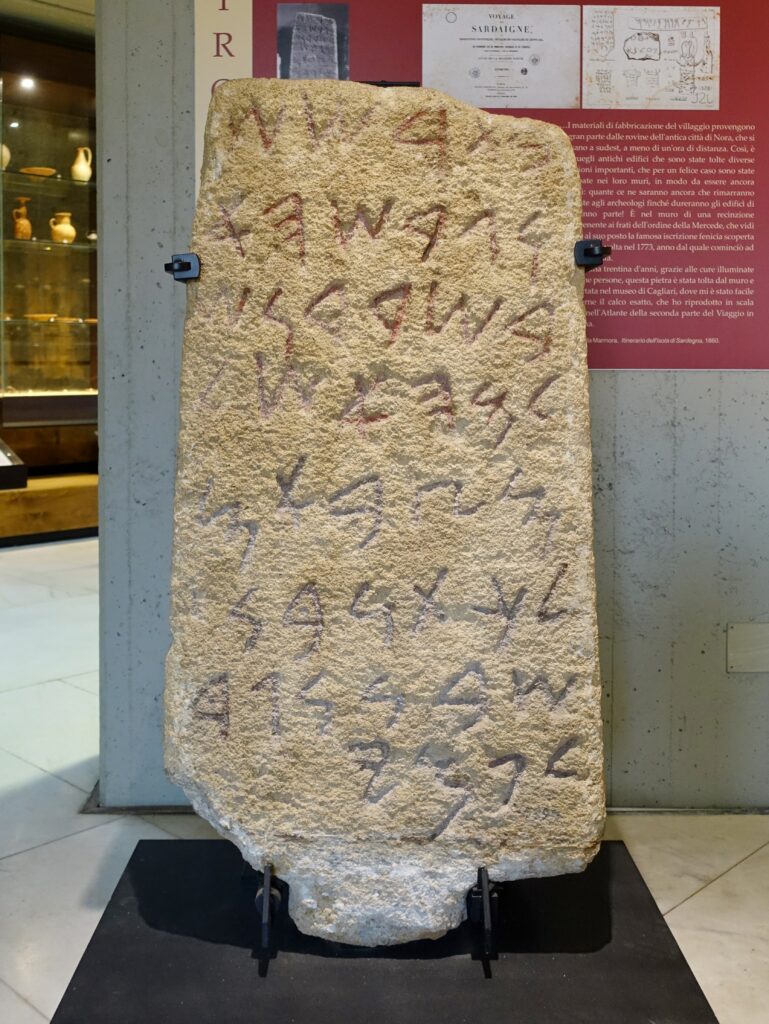

The Nora Stone is one of the most significant archaeological finds from the site. Discovered in the late 19th century, this stone tablet is inscribed with one of the earliest known references to Sardinia, mentioning the name “Shrdn” (Sardinia). The inscriptions are in the Phoenician script and provide crucial evidence of the city’s early interactions and the presence of Phoenician settlers in the region. The stone is currently housed in the National Archaeological Museum in Cagliari, where it remains a key artifact for understanding the island’s ancient history.
Artifacts Housed in Local Museums
In addition to the Nora Stone, numerous artifacts from the site have been excavated and are displayed in local museums. The Giovanni Patroni Museum in Pula houses a variety of artifacts, including pottery, tools, and personal items that offer insights into daily life in ancient Nora. The National Archaeological Museum in Cagliari also holds a significant collection of artifacts from Nora, including mosaics, statues, and inscriptions that illustrate the city’s cultural and historical development through different periods.
Excavation History
The combination of significant finds and ongoing archaeological efforts ensures that Nora remains a vital link to understanding the ancient Mediterranean world and the cultural exchanges that shaped the history of Sardinia.
Key Archaeological Efforts and Findings
Archaeological excavations at Nora began in earnest in the late 19th century when a coastal storm revealed parts of a Phoenician-Punic cemetery. Since then, various excavations have uncovered a wealth of structures and artifacts, shedding light on the city’s extensive history. Significant finds include the remains of the Temple of Tanit, the Roman theater, numerous bath complexes, and residential buildings with intricate mosaics.
The site has been a focal point of continuous archaeological research, with efforts aimed at uncovering, preserving, and interpreting the city’s remains. Modern technology, including 3D reconstructions and virtual tours, has been employed to help visualize and understand the complex layout and historical context of Nora. These efforts not only enhance our knowledge of the city’s past but also make the site more accessible and engaging for visitors.
Where to Sleep Close to Nora in Sardinia
When planning a visit to the ancient city of Nora, you’ll find a variety of accommodation options in the nearby town of Pula and the surrounding area. Here are some of the best choices:
Nora Club Hotel & SPA


Situated in Pula, the Nora Club Hotel & SPA provides a blend of comfort and convenience. The hotel features well-appointed rooms, a wellness center, a swimming pool, and lush gardens. It’s an ideal spot for relaxation after a day exploring Nora and its surroundings. The hotel’s proximity to the beach and the town center makes it a versatile choice for visitors.
Hotel Baia di Nora


Located just a few minutes from the archaeological site, Hotel Baia di Nora offers elegant rooms and suites in a tranquil setting surrounded by Mediterranean nature. Guests can enjoy a private white sandy beach, a range of outdoor activities including snorkeling, diving, and hiking, and a relaxing atmosphere away from the city’s hustle and bustle. This hotel is perfect for those looking to combine luxury with proximity to historical sites.
Lantana Resort Hotel & Apartments
Also located in Pula, Lantana Resort offers both hotel rooms and self-catering apartments, making it suitable for different types of travelers, from couples to families. The resort includes a large swimming pool, beautiful gardens, and a range of services such as a restaurant, bar, and shuttle service to nearby beaches and attractions.
Villa Madau
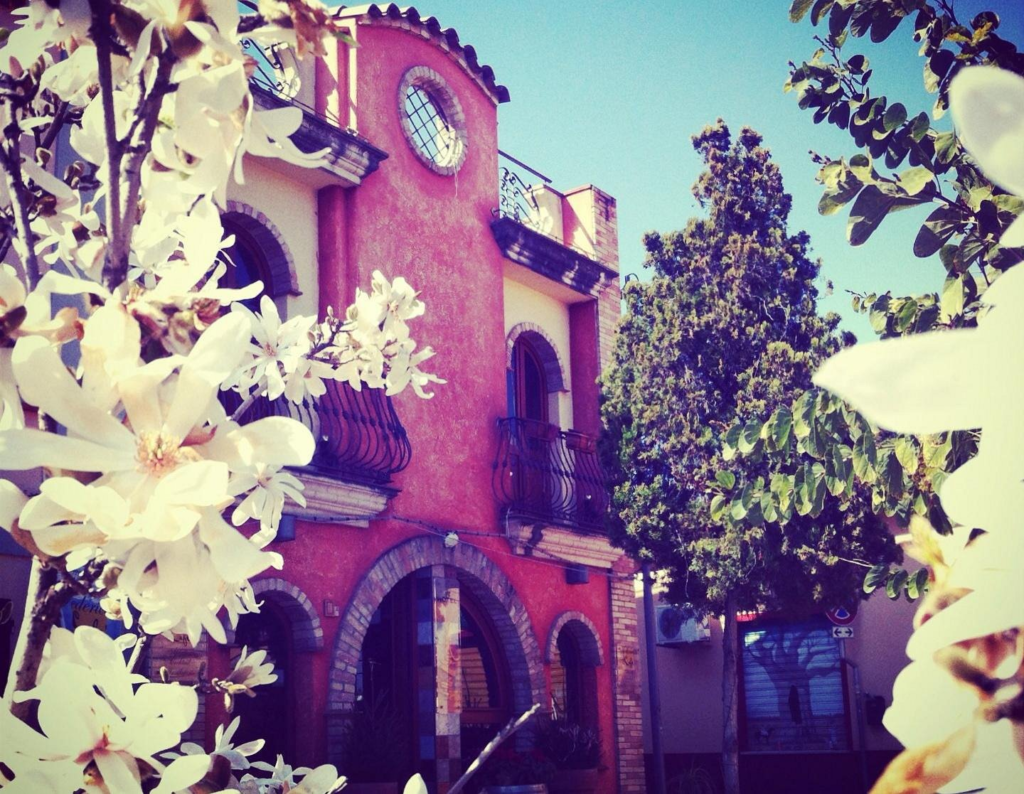

For a more boutique experience, Villa Madau in Pula is a charming hotel that combines modern amenities with traditional Sardinian decor. The hotel is housed in a historic building and offers a cozy, intimate atmosphere with personalized service. Its central location in Pula makes it a convenient base for exploring both the town and the archaeological site of Nora.
Where is Nora in Sardinia?
Nora is an ancient pre-Roman and Roman town located on a peninsula near the town of Pula, near the city of Cagliari in southern Sardinia, Italy. It is situated on a promontory or peninsula called Capo Pula, with the site partially submerged by the Mediterranean Sea.
How to Get There
Directions from Cagliari and Pula
- From Cagliari:
- To reach Nora from Cagliari, take the SS195 highway towards Pula-Teulada. The journey is approximately 40 kilometers and takes around 45 minutes by car. Follow the signs for Nora as you approach Pula. The road is well-marked and easy to navigate.
- From Pula:
- Nora is just a short distance from Pula. Drive along Via Nora, following the signs to the archaeological site. The journey is about 5 kilometers and takes roughly 10 minutes by car. Alternatively, you can enjoy a pleasant walk or bike ride along the designated pathways from Pula to Nora.
Public Transport Options
- Bus:
- From Cagliari, you can take the ARST bus number 129 to Pula. The bus departs from the ARST bus station in Cagliari and takes approximately 50 minutes to reach Pula. From Pula, a local shuttle service (known as “pollicino”) departs hourly from Piazza Municipio and takes about 10 minutes to reach Nora.
Nearby Attractions and Activities
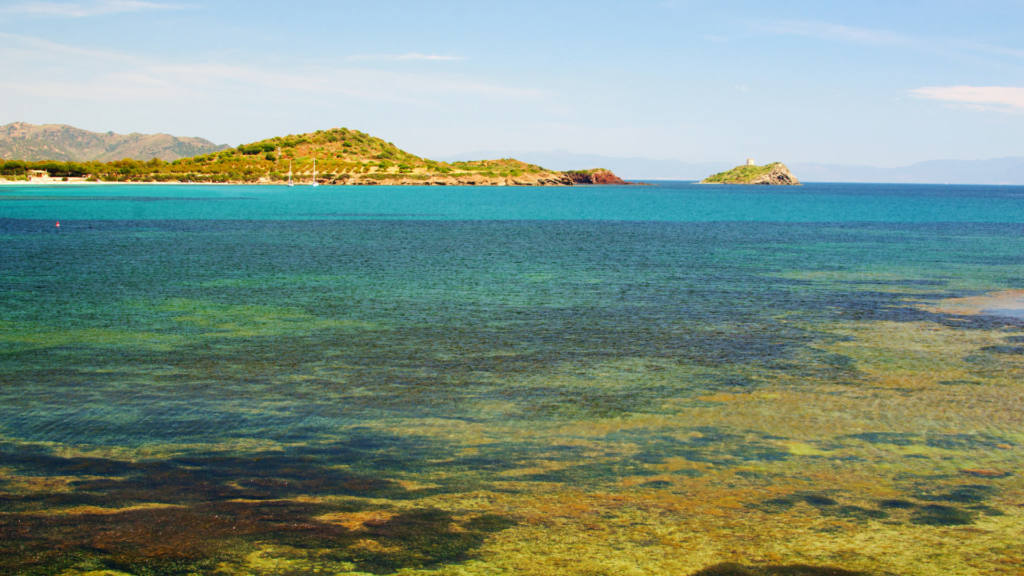

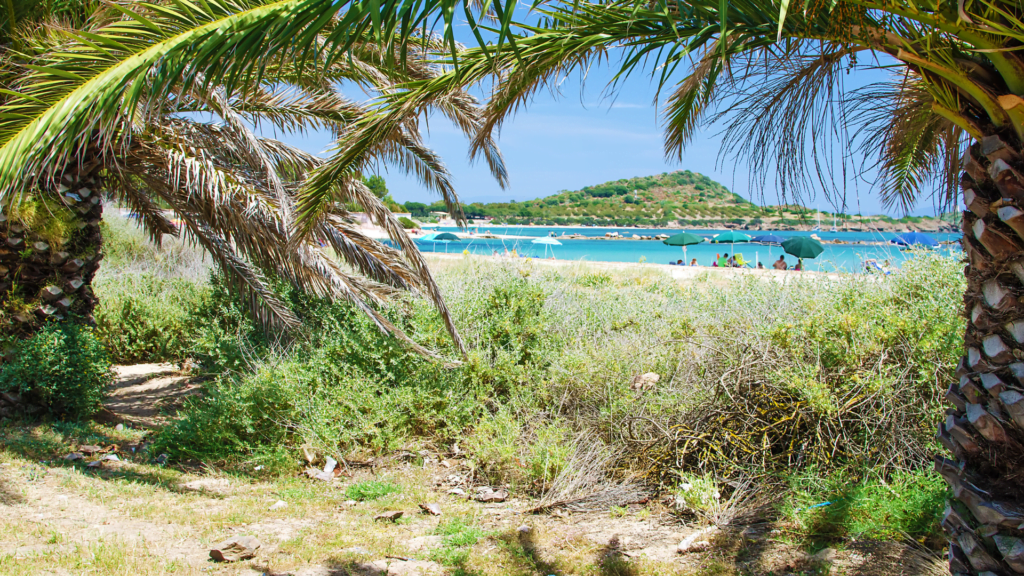

Nora Beach
Nora Beach is a beautiful and serene beach located just a stone’s throw from the archaeological site. Known for its clear, turquoise waters and soft, golden sand, it is an ideal spot for relaxation and water activities.
The beach is sheltered, making it perfect for swimming and snorkeling. Visitors can also explore the nearby lagoon, which is home to various species of birds and marine life. The calm and picturesque setting of Nora Beach makes it a favorite for families and those looking to unwind after exploring the ancient ruins.
Sant’Efisio Church
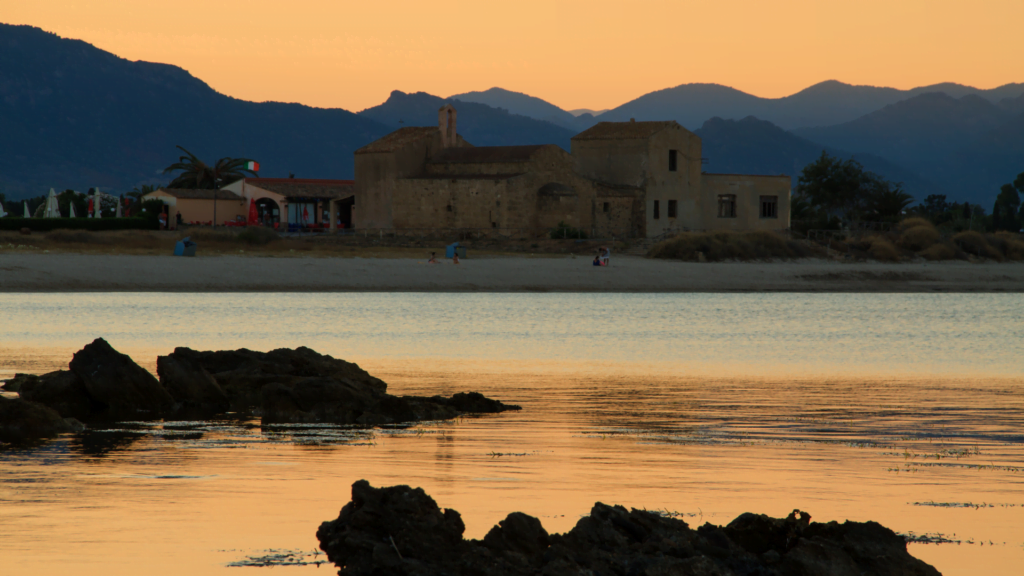

The Church of Sant’Efisio is a historic Romanesque church situated near Nora. It is dedicated to Saint Efisio, a Roman soldier who converted to Christianity and was martyred on this site in the 3rd century AD.
The church plays a significant role in Sardinian culture and history, particularly during the annual festival held on May 1st, where a procession starts in Cagliari and ends at the church in Nora. This event commemorates the saint’s efforts to protect the island from plague and invasions. The church’s historical and cultural importance makes it a must-visit for those interested in the religious heritage of Sardinia.
Other Nearby Sites
Torre del Coltellazzo
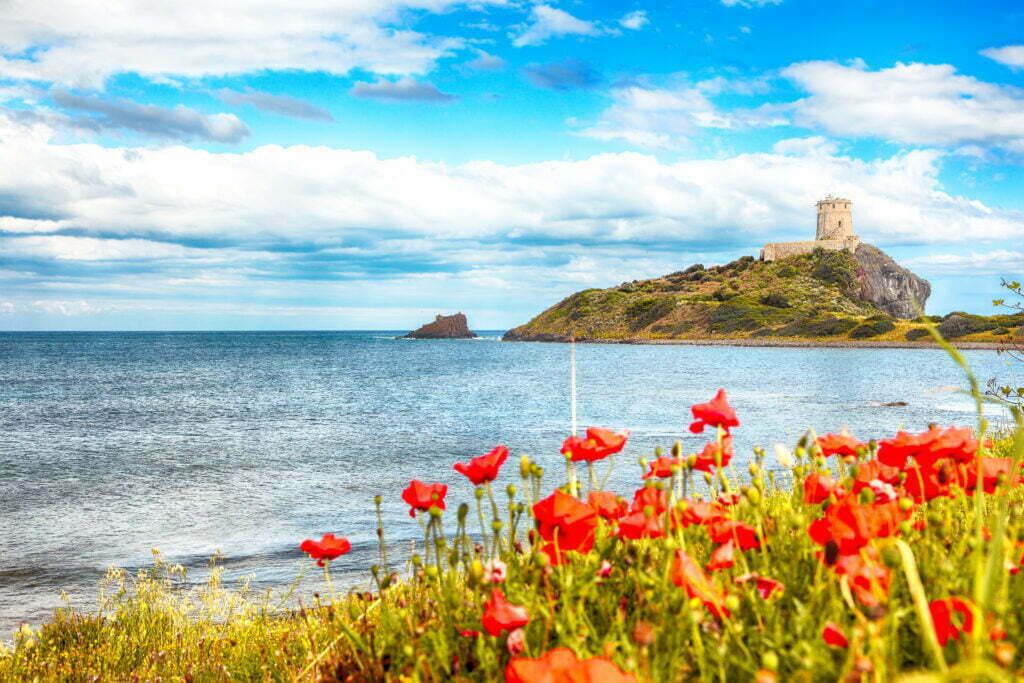

Torre del Coltellazzo is a 16th-century Spanish tower located on a promontory overlooking the Nora site and the sea. Originally built as a lookout point to defend against pirate attacks, the tower offers stunning panoramic views of the coastline and the archaeological site below. It is a short hike from Nora and provides an excellent opportunity for photography and exploration.
Pula Town and Its Offerings
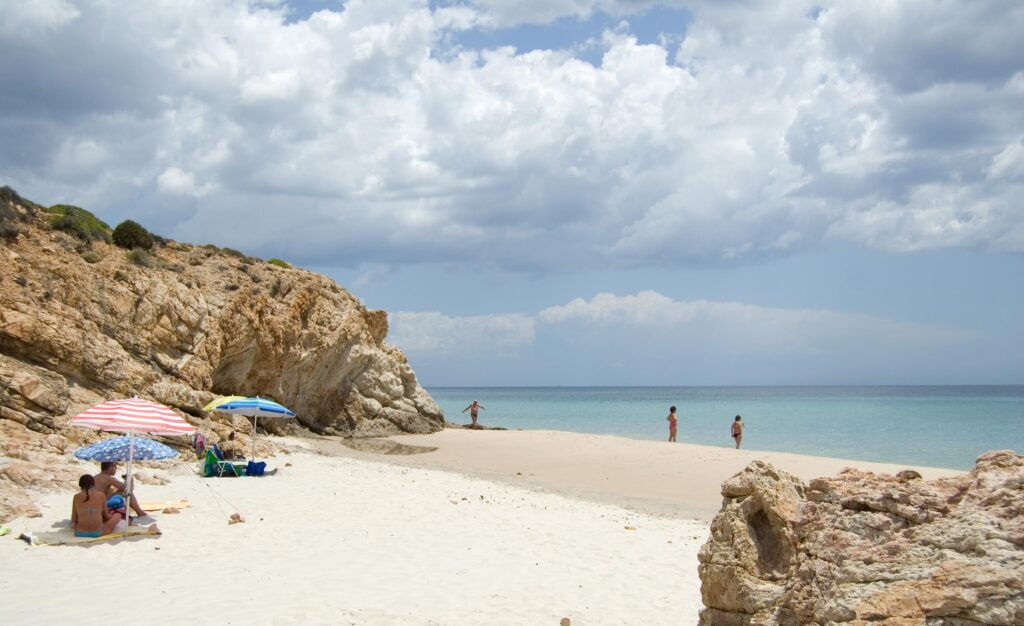

The town of Pula, located just a few kilometers from Nora, is a charming destination known for its vibrant atmosphere and rich cultural heritage. Pula offers a variety of attractions, including:
- Giovanni Patroni Museum: This museum houses artifacts from the Nora excavations, providing deeper insights into the area’s history.
- Local Cuisine: Pula is famous for its culinary delights, featuring fresh seafood and traditional Sardinian dishes. Visitors can enjoy meals at numerous restaurants and trattorias.
- Festivals and Events: Throughout the year, Pula hosts various festivals, markets, and cultural events, showcasing local traditions and crafts.
- Shopping and Nightlife: The town center is dotted with boutique shops, cafes, and bars, offering a lively nightlife scene.
Pula’s blend of historical sites, natural beauty, and modern amenities makes it an excellent base for exploring the southern coast of Sardinia. Visitors can easily spend several days enjoying the town’s offerings and its proximity to the archaeological site of Nora.
Visiting Nora
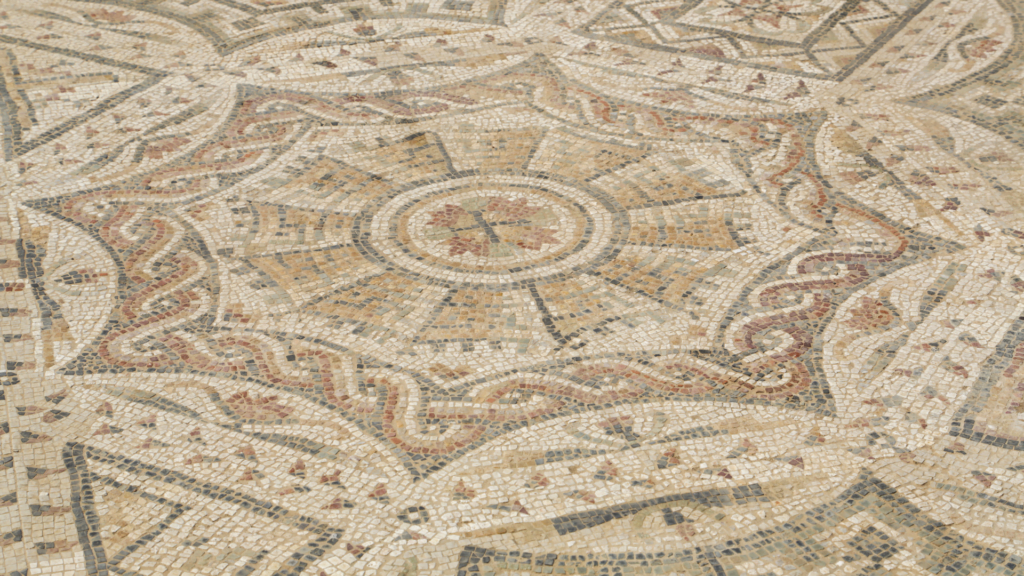

Visiting Nora is more than just a journey through ancient ruins; it’s an opportunity to connect with the rich cultural heritage of Sardinia. The site’s beautiful coastal setting, combined with nearby attractions such as Nora Beach, Sant’Efisio Church, and the charming town of Pula, ensures a well-rounded and memorable experience.
Whether you choose a guided tour or explore at your own pace using resources like the Norapp app, Nora offers a deep and engaging dive into history. Make sure to add this remarkable site to your travel itinerary and discover the stories and secrets of Sardinia’s ancient civilizations.


